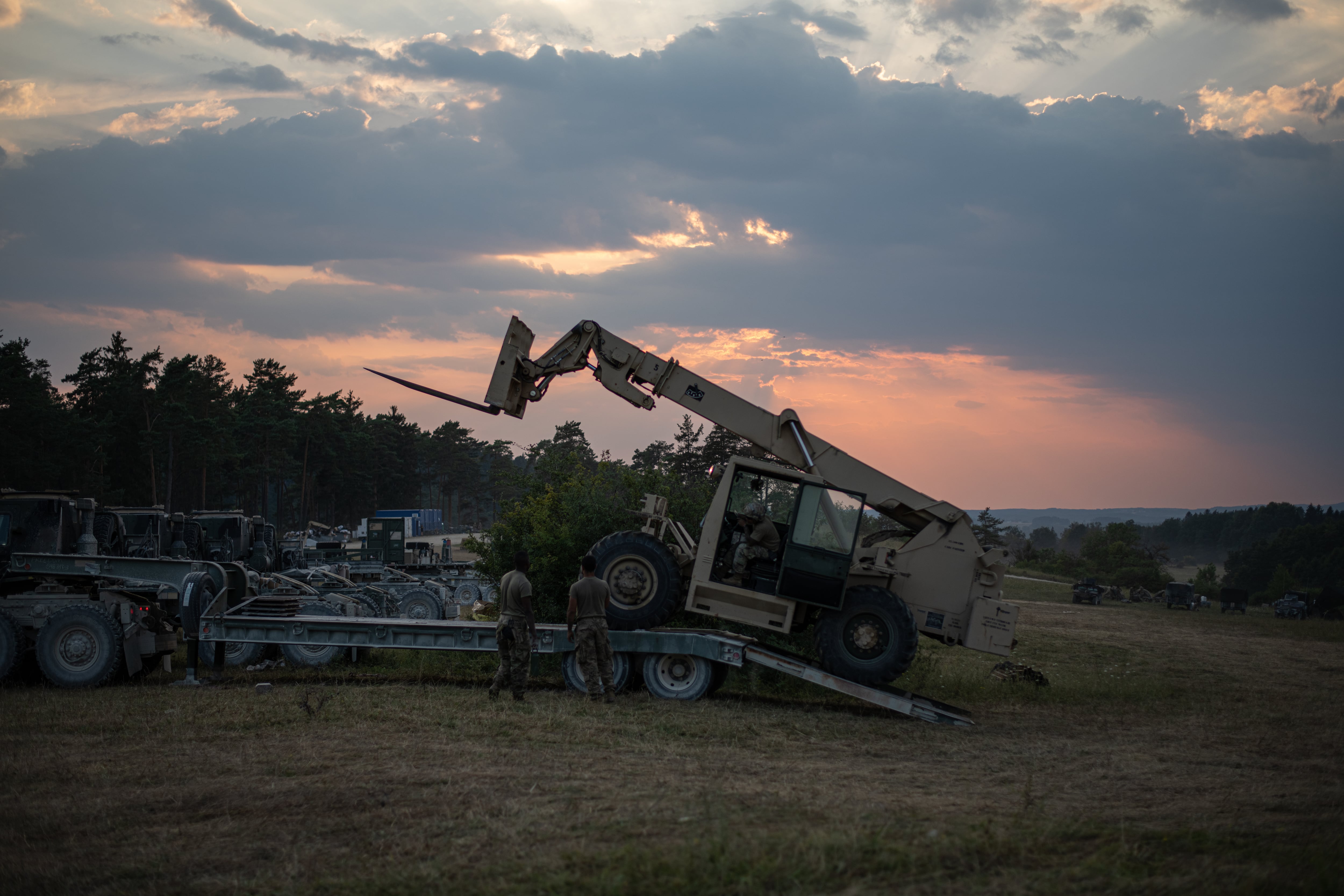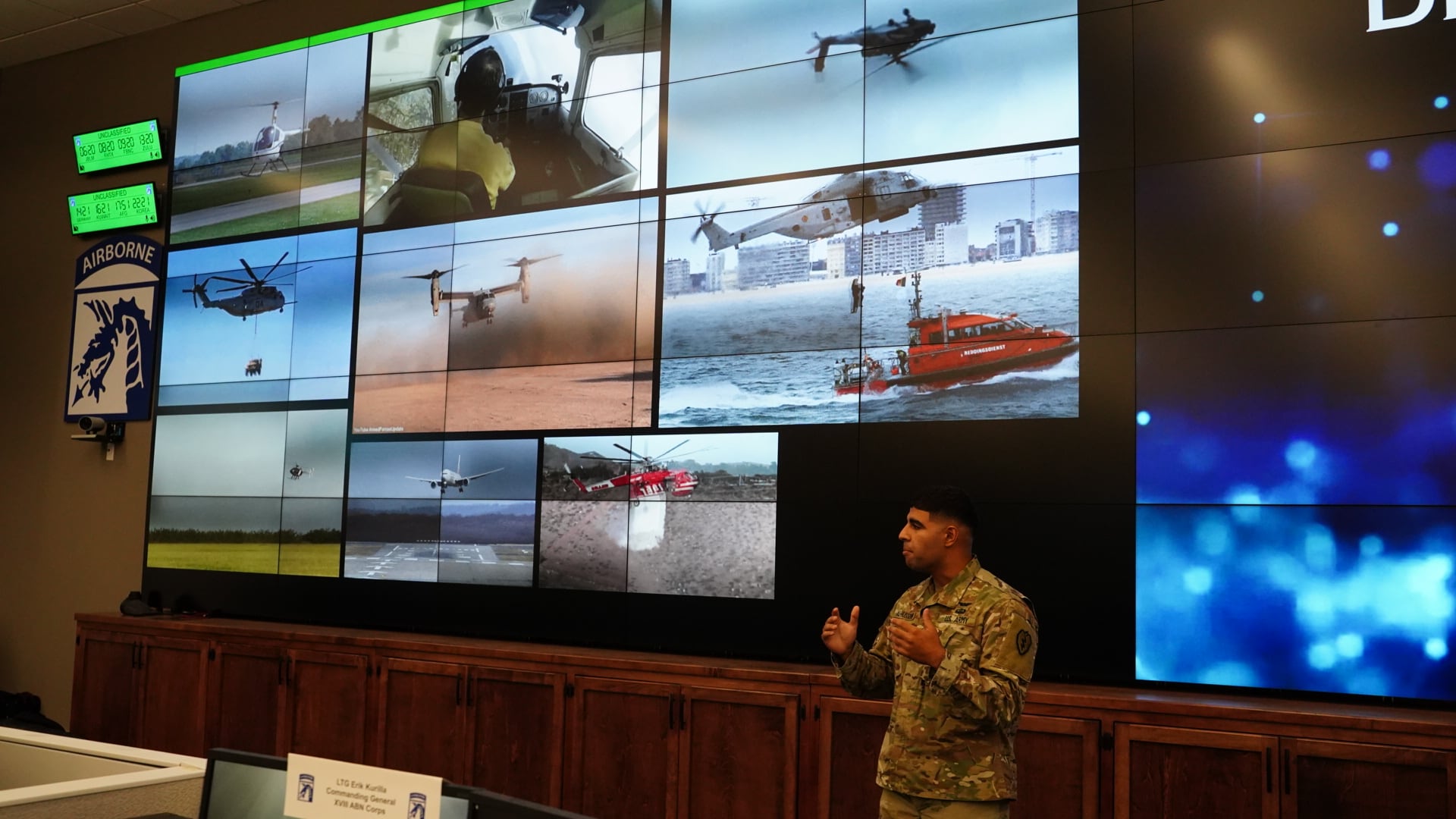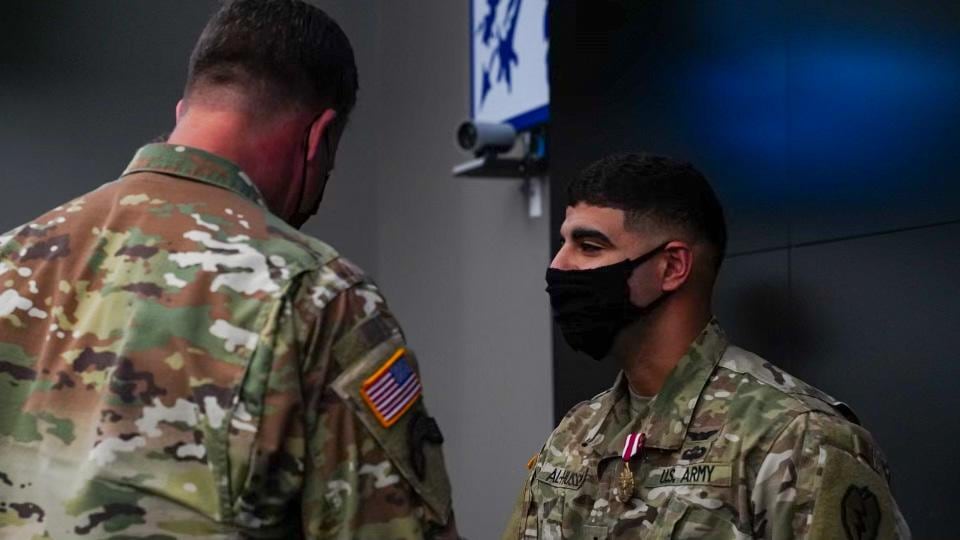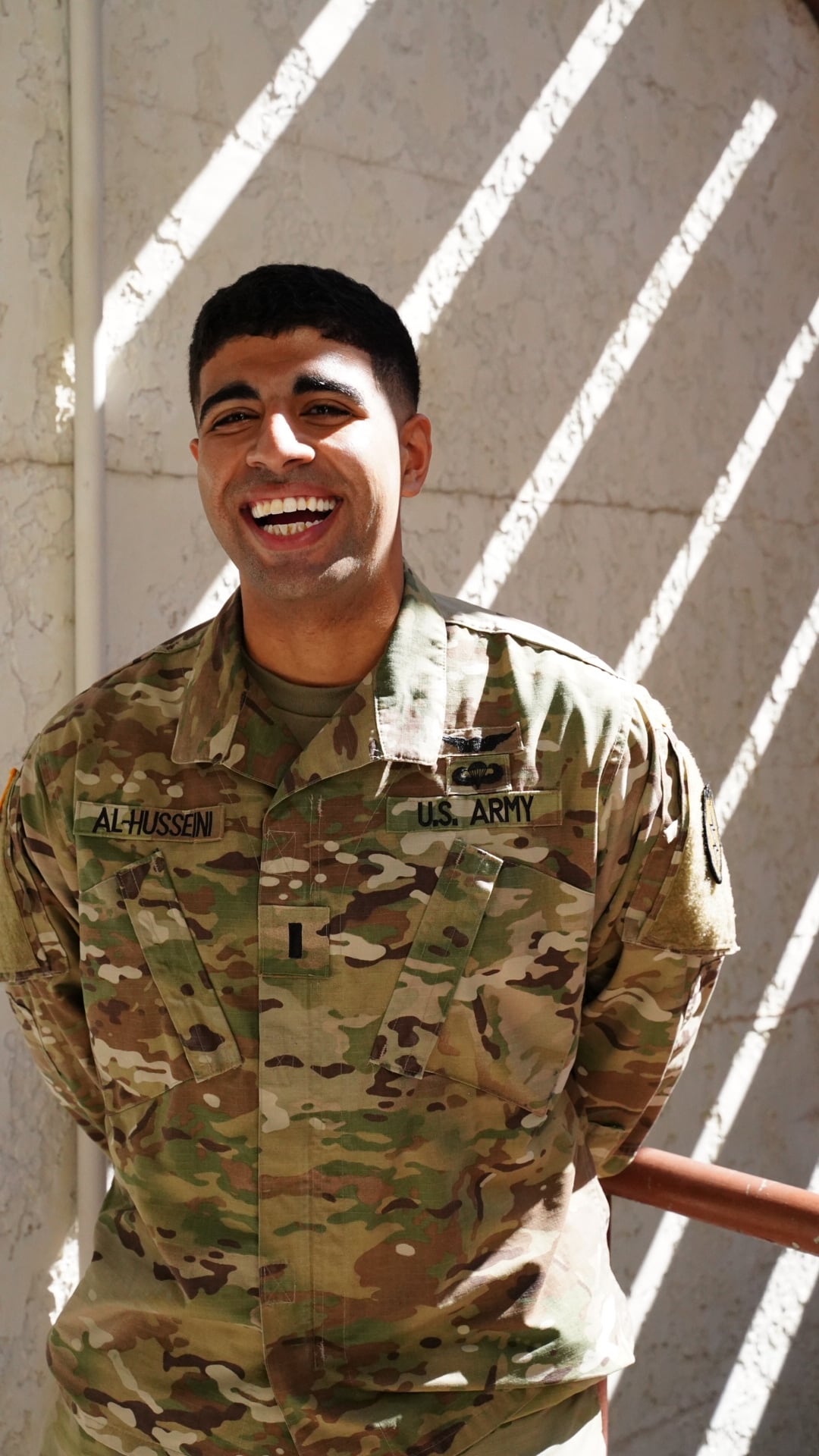A new soldier-created device could help pilots of all aircraft get immediate, usable feedback on how they’re flying.
Army 1st Lt. Mahdi Al-Husseini’s Aura device won the fifth “Dragon’s Lair Innovation Challenge” put on by the XVIII Airborne Corps at Fort Bragg, North Carolina, on Monday. The challenge pits soldiers in a competition to present an innovative solution for all types of military problems.
The Aura device’s hardware includes a camera and a touch screen tablet. But it’s the algorithms and software that Al-Husseini and his project partner, hometown friend and fellow Georgia Institute of Technology alumnus Joshua Barnett, built that make the device work.
Al-Husseini flies a Black Hawk helicopter and serves as a platoon leader for Charlie Company, 3rd Battalion, 25th Combat Aviation Brigade, 25th Infantry Division, out of Hawaii.
RELATED

That’s right, he’s not an XVIII Airborne Corps soldier. He’s the first non-Corps soldier to win the Dragon’s Lair competition, said Col. Joe Buccino, corps spokesman.
The Douglasville, Georgia, native spends his free time, when he’s not studying for his aeronautics degree from Stanford University, flying private aircraft.
About a year ago, he was landing solo and he thought, “I wish I could see how I’m doing.”

Typically, a student pilot flies with their instructor, who provides valuable information and feedback both in-flight and post-flight. But once a pilot goes solo there’s very little feedback.
He mentioned it to his then-operations officer and mentor, Army Capt. Jeremy Bowling, who encouraged him to enter it into the Dragon’s Lair competition.
Well, the Black hawk has a lot more gauges than a commercial single-engine propeller plane. So, Al-Husseini, who has a background in artificial intelligence research, knew he had to get a lot of data from the aircraft.
But plugging something into that complex system and getting government approval to tinker with the guts of it probably was not happening anytime soon.
So, he developed a way for the camera to capture, record and scrape the gauge information from not only the Black Hawk but essentially any aircraft.

But what good is the data if it isn’t easy to use?
“Pilots don’t need more data,” Al-Husseini told Army Times.
Or at least what you deliver a pilot has to be relevant and easily digestible.
“We want pilots to interface as little as possible,” he said. “This is not supposed to be another thing for the pilot to deal with.”
Ideally, the system’s recordings would follow a pilot throughout their career so they could see weak points and strong points, ways to improve and how they’re performing over time.
Instead of being told they’re “overarching” or “under arching” to their spot, they can see virtually how that’s happening and how to adjust their maneuvers for an objectively better move.
Also, Al-Husseini said that trainers could compare pilot data in the same platforms across the service and spot areas to focus on for training, remediation or even technological improvements.
The device doesn’t replace human instructors by a long shot, he said. Instead, he views the device as an “enhancer” to training.
He started serious work on the project in October 2020, and since then, 64 aviators and 17 civilian pilots have used it during his tests.

Al-Husseini has evaluated data from those tests: assuming the device could reduce flight time for corrections by 20 percent, that could shave eight hours off a normally 40-hour military rotary wing progression, which saves at least $33,600 per pilot.
Similar savings are possible for civilian fixed and rotary wing fliers, he said.
Al-Husseini presented his tech pitch to the “Shark Tank-style” Dragon’s Lair competition and got immediate feedback from AI-expert panelists and a suggestion from one enlisted soldier to adapt the tool to ground vehicles such as Strykers, Bradleys or Abrams tanks.
He won the competition by two points out of a total possible 275 points. The runner up was Lt. Col. Jason Harlan of 3rd Infantry Division, who pitched an Abrams tank towing system to the 11 panelists.
And for winning the competition, he got a four-day liberty pass, his pick of Army training schools — he chose freefall parachute school — and a Meritorious Service Medal.
Al-Husseini already has a patent pending on the device, and a side company with his friend Barnett to develop it for civilian use. But, he emphasized, if the Army or Defense Department decides to use it, the company would provide an irrevocable license for military use.
He wants the tech shared widely to benefit military pilots.
Correction: The story has been updated to accurately reflect the billets for Capt. Jeremy Bowling and 1st Lt. Mahdi Al-Husseini.
Todd South has written about crime, courts, government and the military for multiple publications since 2004 and was named a 2014 Pulitzer finalist for a co-written project on witness intimidation. Todd is a Marine veteran of the Iraq War.




